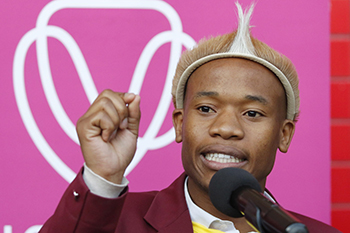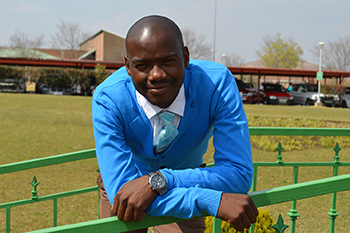The 2015/2016 Student Representative Council (SRC) elections on the Bloemfontein and Qwaqwa Campuses of the University of the Free State (UFS) have been declared free and fair.
The institutional Independent Election Commission Chairperson, Mandla Ndlangamandla, commended the high level of cooperation displayed by all students who participated in the peaceful and organised elections on the Qwaqwa Campus.
“We are proud to indicate that from the beginning of the election process, there were no incidents of intimidation, disruption, threats, and violence that were reported,” he said.
Announcing the election results at Bloemfontein Campus, the representative of the Electoral Commission of South Africa (IEC), Andrew Ndelele, also confirmed that the commission had ensured that the elections were credible.
Voter turn-out increased at both campuses compared to the previous year. The elections, which took place from Friday 28 August to 1 September 2015, saw 8% and 0.7% increases in votes casted at the Qwaqwa and Bloemfontein Campuses, respectively.
Paseka Sikhosana, President-elect of the Qwaqwa Campus, commended the unity and orderliness displayed by students: “After the polling stations had closed, we came together and sang in peace”.
Incoming SRC President of the Bloemfontein Campus, Lindokuhle Ntuli, also endorsed the impartiality of the elections, while expressing how humbled he was by the support he received during the campaigning period.
Bloemfontein elective portfolios:

Bloemfontein Campus president: Lindokuhle Ntuli
Photo: Johan Roux |
President: Lindokuhle Ntuli
Vice-President: Mpho Khati
Secretary: Tsietso Mafaso
Treasurer: Katleho Masheane
Culture: Delia Moumakwe
Sport: Kabelo Elijah Noosi
Transformation: Katleho Mmolayeng Letube
Student Accessibility and Support: Victor Fana Sejane
Media and Marketing: Peo Morwesi Segano
First-generation students: Nicola King
Legal and Constitutional Affairs: Luke Harrold Small
Student Development and Environment: Karabo Pheko
Bloemfontein ex officio portfolios:
Associations Student Council: Sikhulekile Luwaca
Academic Affairs Student Council: Letsika Liqoalane
Campus Residences Student Council: Ingrid Wentzel
Commuter Student Council: Audrey Sithebe
Postgraduate Student Council: Kamogelo Dithebe
International Student Council: Takudzwa Gezi
Student Media Council: Hatsu Mphatsoe
Rag Fundraising Council: Tubatsi Moloi
Rag Community Service Council: Johan Diedericks

Qwaqwa Campus president: Paseka Sikhosane
Photo: Thabo Kessah |
Qwaqwa elective portfolios:
President: Paseka Sikhosane
Vice-President: Zethu Mhlongo
Secretary: Nondumiso Langa
Treasurer: Palesa Selepe
Student Development and Environmental Affairs: Lindokuhle Ngubane
Media and Publicity: Bongiwe Buthelezi
Politics and Transformation: Nthabiseng Mokoena
Qwaqwa ex officio portfolios:
Academic Affairs: Edward Nkadimeng
Arts and Culture: Kwenzakwenkosi Mthethwa
Sports Affairs: Thabo Zengele
Rag and Dialogue: Dieketseng Mokoena
Religious Affairs: Mamosebetsi Mokoena
Residence Affairs: Pheletso Moekoa
Off-Campus: Nicholas Sibeko